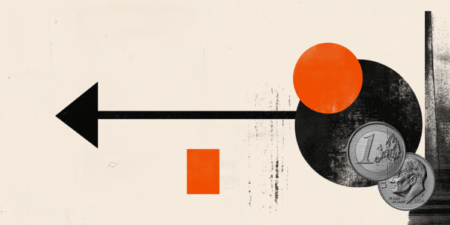- EUR/USD edged lower on Monday as potential trade tensions weighed down market sentiment.
- President Donald Trump announced plans to initiate a 100% tariff on foreign-produced films, raising concerns over escalating protectionist policies.
- Eurozone Harmonized Index of Consumer Prices remained steady at 2.2% YoY in April, slightly above the expected 2.1%.
EUR/USD is kicking off the week on a weaker note, trading near 1.1320 during the Asian session on Monday. US President Donald Trump confirmed he would not seek to remove Federal Reserve (Fed) Chair Jerome Powell before his term ends in May 2026. While Trump criticized Powell, calling him “a total stiff,” he reiterated that interest rates should eventually be lowered.
Additionally, the EUR/USD pair faces headwinds possibly from potential trade tensions. Trump announced plans to direct the US Trade Representative and Commerce Department to begin the process of imposing a 100% tariff on foreign-produced movies.
On the data front, the US Nonfarm Payrolls (NFP) report showed a stronger-than-expected rise of 177,000 jobs in April, following a revised 185,000 increase in March. This beat the market forecast of 130,000. The unemployment rate remained steady at 4.2%, while average hourly earnings held at 3.8% year-on-year. Later on the day, traders will watch for the US ISM Services PMI for further direction.
The Euro found some support on Friday after stronger-than-expected Eurozone inflation figures. Harmonized Index of Consumer Prices held steady at 2.2% year-over-year in April, slightly above the forecasted 2.1%. Services inflation accelerated to 3.9%, and core inflation (excluding food and energy) rose to 2.7%, both above expectations. These readings reinforced market expectations for a cumulative 60 basis points (bps) in European Central Bank (ECB) rate cuts by year-end.
Euro FAQs
The Euro is the currency for the 19 European Union countries that belong to the Eurozone. It is the second most heavily traded currency in the world behind the US Dollar. In 2022, it accounted for 31% of all foreign exchange transactions, with an average daily turnover of over $2.2 trillion a day.
EUR/USD is the most heavily traded currency pair in the world, accounting for an estimated 30% off all transactions, followed by EUR/JPY (4%), EUR/GBP (3%) and EUR/AUD (2%).
The European Central Bank (ECB) in Frankfurt, Germany, is the reserve bank for the Eurozone. The ECB sets interest rates and manages monetary policy.
The ECB’s primary mandate is to maintain price stability, which means either controlling inflation or stimulating growth. Its primary tool is the raising or lowering of interest rates. Relatively high interest rates – or the expectation of higher rates – will usually benefit the Euro and vice versa.
The ECB Governing Council makes monetary policy decisions at meetings held eight times a year. Decisions are made by heads of the Eurozone national banks and six permanent members, including the President of the ECB, Christine Lagarde.
Eurozone inflation data, measured by the Harmonized Index of Consumer Prices (HICP), is an important econometric for the Euro. If inflation rises more than expected, especially if above the ECB’s 2% target, it obliges the ECB to raise interest rates to bring it back under control.
Relatively high interest rates compared to its counterparts will usually benefit the Euro, as it makes the region more attractive as a place for global investors to park their money.
Data releases gauge the health of the economy and can impact on the Euro. Indicators such as GDP, Manufacturing and Services PMIs, employment, and consumer sentiment surveys can all influence the direction of the single currency.
A strong economy is good for the Euro. Not only does it attract more foreign investment but it may encourage the ECB to put up interest rates, which will directly strengthen the Euro. Otherwise, if economic data is weak, the Euro is likely to fall.
Economic data for the four largest economies in the euro area (Germany, France, Italy and Spain) are especially significant, as they account for 75% of the Eurozone’s economy.
Another significant data release for the Euro is the Trade Balance. This indicator measures the difference between what a country earns from its exports and what it spends on imports over a given period.
If a country produces highly sought after exports then its currency will gain in value purely from the extra demand created from foreign buyers seeking to purchase these goods. Therefore, a positive net Trade Balance strengthens a currency and vice versa for a negative balance.
Read the full article here














